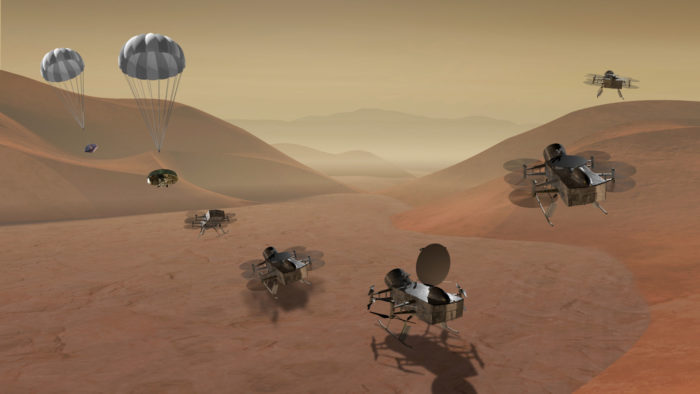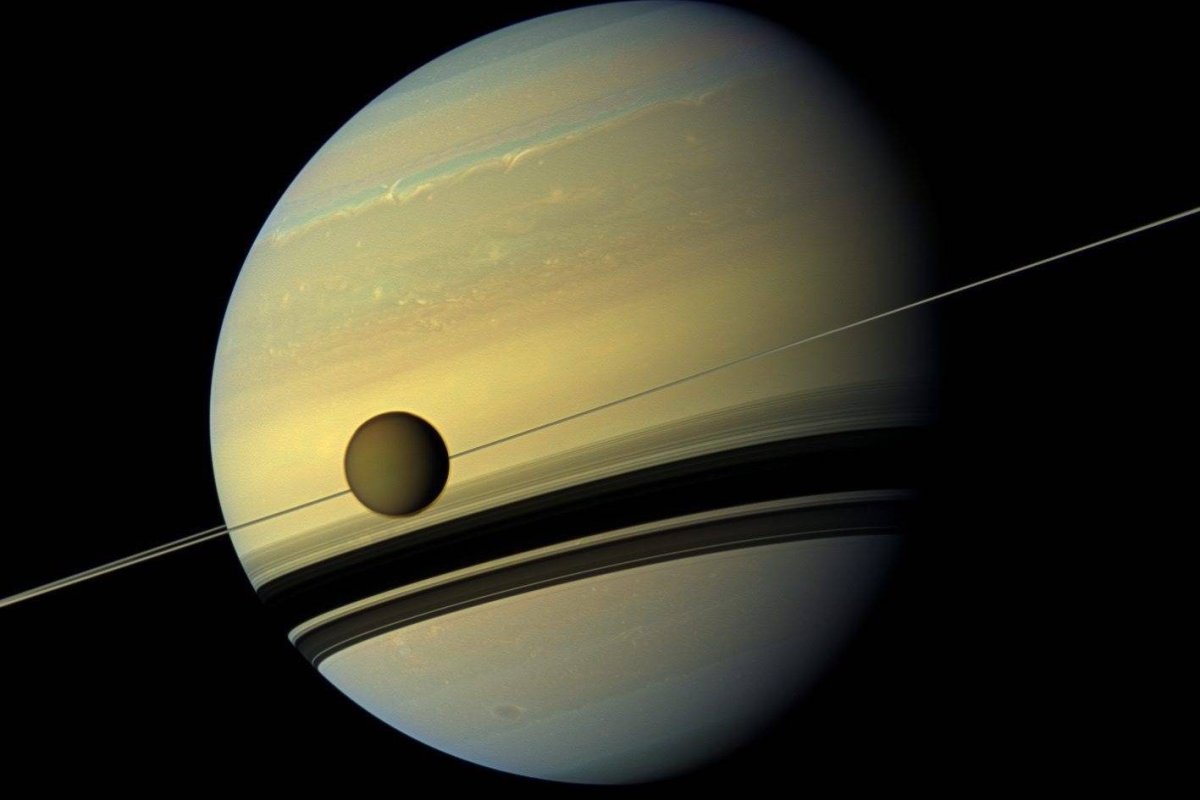A Western University scientist might see a project she’s co-led launched into space after it was shortlisted by NASA for a future mission.

The Dragonfly project, led by Elizabeth Turtle of Johns Hopkins Applied Physics Laboratory, would see a drone-like quadcopter flying above the surface of Saturn’s largest moon, Titan.
Catherine Neish, a Western Earth Sciences professor, is co-investigator on the project and is also the lone Canadian researcher on the team, said officials with Western University.
The craft, which has four pairs of stacked rotors, is one of two finalists for NASA’s next New Frontiers Mission. If selected, it would fly from site to site on Titan through the moon’s atmosphere, which is twice as thick as Earth’s, analyzing its chemistry, geology, and potential for life.
Unlike conventional, slow-moving rovers that have been used on Mars, Western officials say Dragonfly would be able to explore hundreds of kilometres of surface area while scouting geology and gathering data.
“There’s something very ‘simple’ about having a little drone flying around Titan,” said Neish in a statement. “It’s clever in a way that people weren’t expecting and, I think, it’s audacious and exciting – and realistic.”
Neish said Titan has an atmospheric veil over it that obscures high-resolution views of its surface. The Huygens probe in 2005 partly lifted that veil with images of a single small area, which Neish compared to “landing on a London street and saying you’ve seen the whole Earth.”
Scientists expect rivers of liquid methane and ethane will run below the smoggy atmosphere, leaving marble-sized ice pebbles. They also believe an ice-water chemical soup near or below the surface might be a nursery for some form of life.
“The chemistry is going to be amazing, but I’m really interested in what Titan looks like. I’m guessing it’s just this weirdly wonderful world that looks like Earth – a strange, frozen sedimentary place – but with all the wrong ingredients,” said Neish.
Neish is involved in other spacecraft missions with international teams, and specializes in the geology of planetary surfaces.
Each of the two shortlisted teams have received $4-million from NASA to develop their concepts for the rest of the year. One project will be chosen by mid-2019, and supported with as much as $850-million in funding.
If chosen, Dragonfly could be launched as early as 2025. It would take around five years to reach Titan, some












Comments